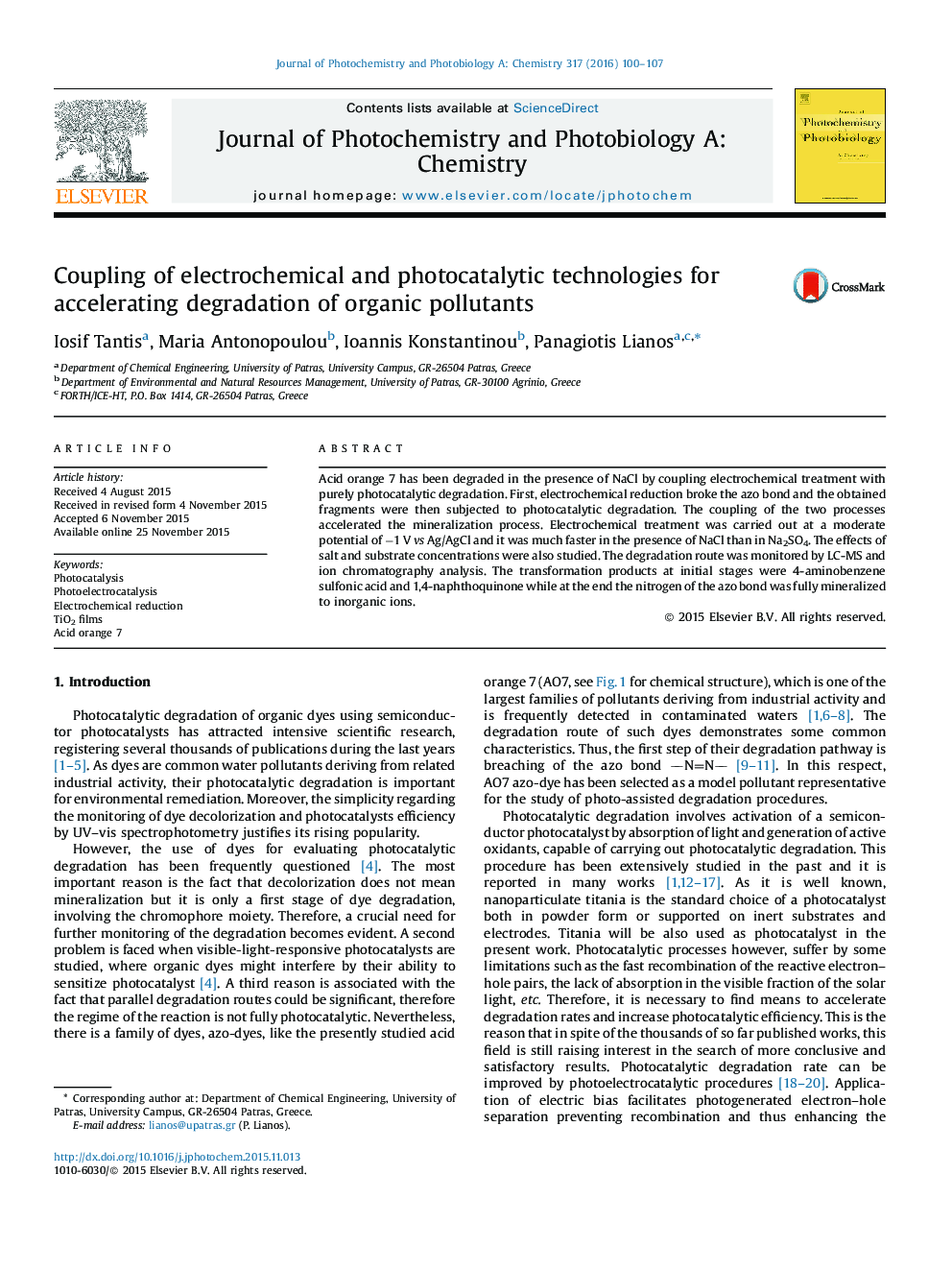| Article ID | Journal | Published Year | Pages | File Type |
|---|---|---|---|---|
| 26346 | Journal of Photochemistry and Photobiology A: Chemistry | 2016 | 8 Pages |
•Coupling of electrochemical reduction with photocatalysis.•Much shorter time to mineralization by first treating pollutant electrochemically.•Acid orange 7 was used as model azo-dye.•The presence of NaCl was proven crucial contrary to Na2SO4, which was ineffective.
Acid orange 7 has been degraded in the presence of NaCl by coupling electrochemical treatment with purely photocatalytic degradation. First, electrochemical reduction broke the azo bond and the obtained fragments were then subjected to photocatalytic degradation. The coupling of the two processes accelerated the mineralization process. Electrochemical treatment was carried out at a moderate potential of −1 V vs Ag/AgCl and it was much faster in the presence of NaCl than in Na2SO4. The effects of salt and substrate concentrations were also studied. The degradation route was monitored by LC-MS and ion chromatography analysis. The transformation products at initial stages were 4-aminobenzene sulfonic acid and 1,4-naphthoquinone while at the end the nitrogen of the azo bond was fully mineralized to inorganic ions.
Graphical abstractFigure optionsDownload full-size imageDownload as PowerPoint slide
